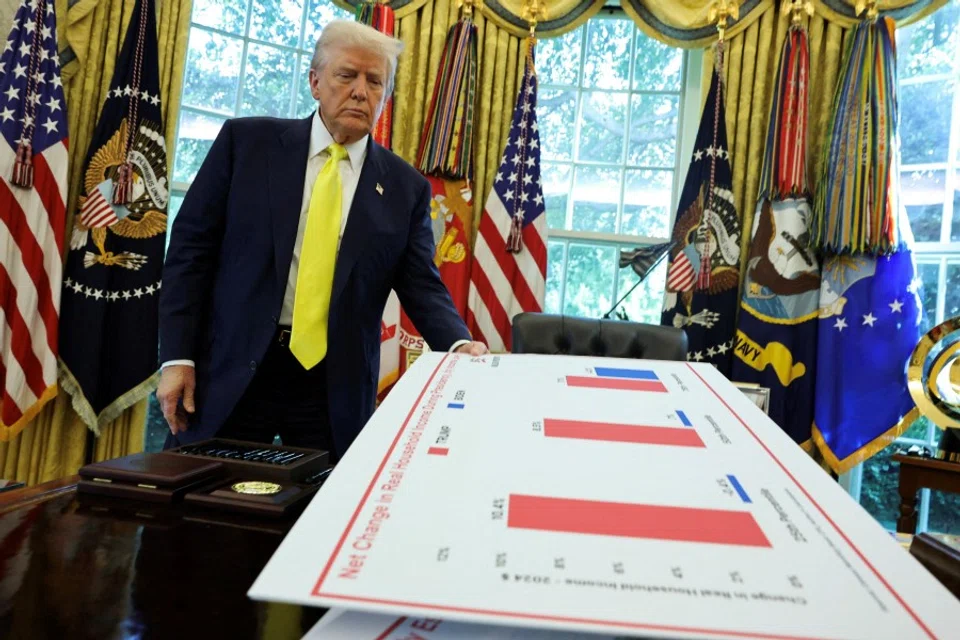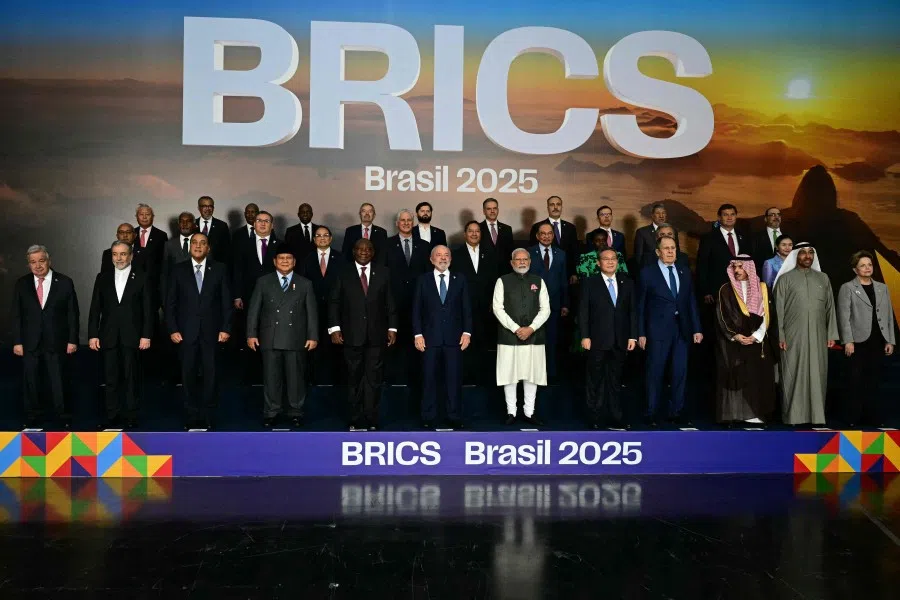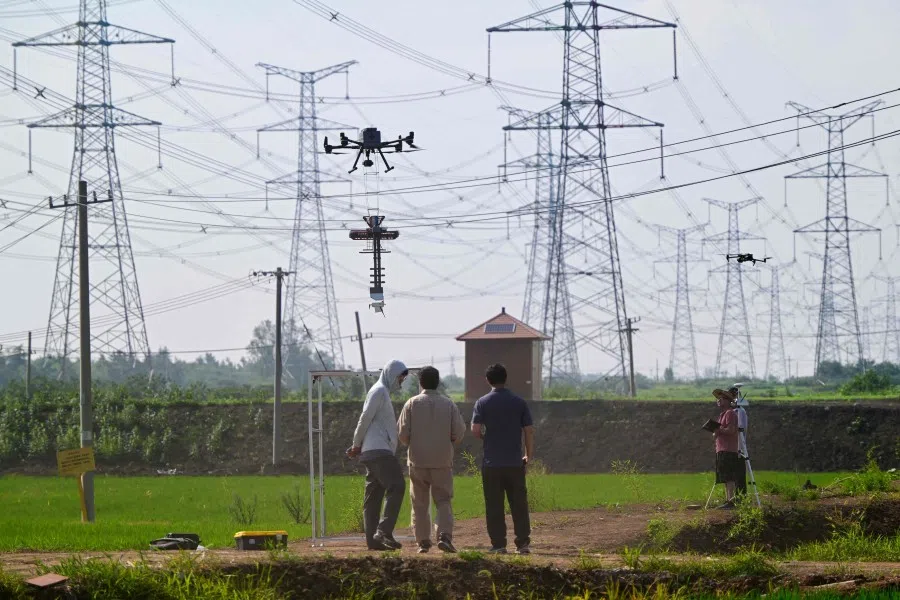Trump’s tariff war seeks to reshape global order, but China is ready
When China abandoned its policy of keeping a low profile in 2009 and sought to become a competitor to the US, it anticipated today’s confrontation. Commentator Qinglian He takes a look at how US President Donald Trump is using tariffs to restructure international economic alliances and focus its efforts on dealing with China as the main adversary.

US President Donald Trump recently signed a presidential order announcing new “reciprocal tariffs” on nearly 70 countries, with rates ranging from 10% to 41%, slightly lower overall than the initial announcement in early April. The countries have reacted in various ways to the new tariffs — from reluctantly accepting and seeking continued negotiations, to expressing deep regret or protesting angrily.
Notably, Trump declared that countries purchasing Russian energy would be subject to a secondary tariff, specifically targeting BRICS members Russia, China and India. The apparent goal is to leverage tariffs to break up what he sees as an “anti-American” economic bloc.
These secondary tariffs serve as a strategic tool to test the endurance and resolve of opposing countries. They act as pressure tactics — if the targeted nations concede, the tariffs are seen as justified; if they resist effectively, the conflict remains mostly rhetorical. However, for countries lacking the strength or determination to push back, failing to respond firmly almost guarantees a defeat in both economic and political terms.
... since 2019, China and Russia have transformed BRICS — originally a loose economic coalition — into a relatively cohesive economic bloc.
Perceived threat to US and US dollar
During an interview with accompanying journalists aboard Air Force One on his way home from Scotland on 29 July, Trump revealed the plan to impose a 100% secondary tariff on countries buying Russian energy. Earlier, on 14 July, he had already warned that if Russia and Ukraine failed to reach a ceasefire agreement within 50 days, the US would impose “very severe” tariffs on Russia.
One of the reasons the US tariffs evolved from targeting Russia to imposing secondary tariffs on countries purchasing Russian energy is that since 2019, China and Russia have transformed BRICS — originally a loose economic coalition — into a relatively cohesive economic bloc. According to World Bank statistics, based on purchasing power parity (PPP), the share of global GDP held by the ten BRICS countries reached a record 35.7% in 2023, while that of the G7 dropped to 29%.

Another reason is that since 2019, BRICS members have engaged in currency swap agreements among themselves and settled trade using their respective national currencies — especially the Chinese renminbi (RMB) — which many observers interpret as a move towards de-dollarisation. Trump has long viewed this trend with deep suspicion, repeatedly asserting that the BRICS alliance was created to undermine the US and the status of the US dollar, and he has issued stern warnings about it.
On 30 January, Trump posted on his social media platform Truth Social, warning BRICS members not to create a new BRICS currency, nor to support any other currency intended to replace the US dollar as the world’s reserve currency — otherwise, the US would impose a 100% tariff on those countries.
In response, Kremlin spokesperson Dmitry Peskov stated on 31 January that BRICS was not talking about the creation of a common currency, but joint investment platforms that would allow joint investments in third countries, mutual investments and so on.
Due to sanctions, Russia has largely lost access to dollar-based transactions. Commentators have noted that even the original five BRICS countries are unlikely to agree on a common currency, as BRICS is far from being an ideal region for a shared monetary system, with many political and economic divergences among its members.

Indeed, Trump firmly believes in the destructive power of high tariffs. On 6 July, during the 17th BRICS Summit held in Rio de Janeiro, Brazil, he posted on social media: “Any Country aligning themselves with the Anti-American policies of BRICS, will be charged an ADDITIONAL 10% Tariff. There will be no exceptions to this policy.”
China responds: National sovereignty and security at stake
Before introducing secondary tariffs, Trump had repeatedly stated his intention to impose further economic sanctions on Russia. However, he later realised that these so-called sanctions were largely ineffective. Russia has managed to hold on primarily due to support from China, which has been purchasing large amounts of Russian energy. India, too, has bought large quantities of discounted Russian energy during the Russia-Ukraine war. As a result, on 31 July, Trump announced that starting 1 August, the US would impose a 25% tariff on India, “plus a penalty”.
Typically, when China invokes the terms “sovereignty” and “security”, it signals a firm stance of non-compromise, and analysts have widely interpreted this as an unambiguous rejection of the US demand.
The US and China have held three rounds of negotiations over tariffs. They announced that they had “reached consensus” after the first two rounds respectively, but fell short in the third round due to the addition of secondary tariffs on buyers of Russian energy.
US Treasury Secretary Scott Bessent also warned China that the US Congress is currently reviewing a bill authorising the president to impose tariffs of up to 500% on countries importing Russian oil. If passed, other G7 members and even the entire European Union could follow suit and impose secondary tariffs on China.

When asked by an AFP reporter to comment on this threat, a spokesperson for China’s Ministry of Foreign Affairs responded that China would take appropriate measures to secure its energy supply based on its national interests and would “firmly defend its sovereignty, security, and development interests”. Typically, when China invokes the terms “sovereignty” and “security”, it signals a firm stance of non-compromise, and analysts have widely interpreted this as an unambiguous rejection of the US demand.
US-India ‘little boat of friendship’ easily overturned
India has always thought highly of its own position in the international community, and past US administrations have valued India as a quasi-ally. For instance, during Trump’s first term, the Obama-era “Asia-Pacific Strategy” was rebranded as the “Indo-Pacific Strategy”, positioning India as an indispensable partner in countering China.
And on 25 June 2024, then US Deputy Secretary of State Kurt Campbell said in a speech at the Council on Foreign Relations that the US needs to recruit more international students in STEM (Science, Technology, Engineering, and Math) fields, but primarily from increasingly important partners like India rather than China. He also suggested that Chinese students be steered towards the humanities instead of the sciences. And during her presidential campaign, then Democratic Vice-President Kamala Harris had brought into play her identity as a minority of Indian descent.
But the “little boat of friendship” is easily overturned. On 30 July, Trump harshly criticised India: “Remember, while India is our friend, we have, over the years, done relatively little business with them because their Tariffs are far too high, among the highest in the World, and they have the most strenuous and obnoxious non-monetary Trade Barriers of any Country. Also, they have always bought a vast majority of their military equipment from Russia, and are Russia’s largest buyer of ENERGY, along with China, at a time when everyone wants Russia to STOP THE KILLING IN UKRAINE — ALL THINGS NOT GOOD!”
Then, the US president took to social media to attack the increasingly close relationship between India and Russia: “I don’t care what India does with Russia. They can take their dead economies down together, for all I care.”
India now stands at a crossroads in international relations: it can either align more closely with the US to avoid punitive tariffs and penalties, or continue purchasing cheap Russian oil and military equipment, thereby reinforcing BRICS goals.

India was quick to engage in tariff talks with the US, but there has been no real progress in negotiations due to major disagreements over market access in India’s agricultural sector. Within hours of Trump announcing the 25% tariff hike on India, India’s Ministry of Commerce announced that it has taken note of Trump’s statement and is studying its implications. Furthermore, India would “take all steps necessary to secure our national interest”, especially its farmers, entrepreneurs, and MSMEs (micro, small and medium-sized enterprises).
Indeed, India will not back down in protecting its people. Bloomberg reported that in response to the tariff increase, India has informed the US that it is no longer interested in buying F-35 fighter jets.
Analysts say that if Trump’s threats are carried out, the resulting tariff shock could cause India’s GDP to drop by as much as 30 basis points. India now stands at a crossroads in international relations: it can either align more closely with the US to avoid punitive tariffs and penalties, or continue purchasing cheap Russian oil and military equipment, thereby reinforcing BRICS goals. Under Trump’s pressure, China and Russia have little room to manoeuvre, but India still has options, making its response especially significant.
At present, India has chosen to continue buying Russian oil. However, due to sanctions, three oil tankers originally scheduled to deliver Russian oil to Indian ports this month have already diverted their routes.
Trump’s core belief: tariffs a strategic tool for foreign relations.
Before any agreements were signed, people said that Trump treated US allies the EU, Japan and South Korea even more harshly than he treated China. But the narrative has shifted after the 15% tariff agreement was implemented — now people praise Trump for being wise, using tariffs to restructure international economic alliances and focus efforts on dealing with China as the main adversary. This is overthinking it, and it stems from a lack of understanding of the neoconservative worldview in American foreign policy.

At present, Trump is most influenced by the neoconservative diplomatic view that the US does not need allies and can achieve anything it wants through its own strength alone. The first phase of the tariff war fully reflects a core belief shared by Trump and his close aides: that tariffs are a key strategic tool for adjusting foreign relations.
... this process requires dropping the image of a “benevolent America” in favour of a “dominant America”.
Even now, many people are looking only at the money, calculating how much revenue the Trump administration has generated in tariffs over the past few months, while completely ignoring his grand strategic vision.
Since 2016, Trump has declared his intention to end the Clinton-era policy of fully opening the US market and granting World Trade Organisation members most-favoured nation status, aiming instead to reestablish a US-led global economic order. Naturally, this process requires dropping the image of a “benevolent America” in favour of a “dominant America”.
When China abandoned its policy of keeping a low profile in 2009 and sought to become a competitor to the US, it anticipated today’s confrontation. This is precisely why the realist theory of international relations proposed by academic John Mearsheimer has gained such popularity in China. According to his theory of “offshore balancing”, whenever a regional hegemon arises, the US will try to suppress it.
China understands that it can and must prepare accordingly, laying the groundwork in all aspects for a confrontation with the US. The US-China trade war that began under Trump 1.0, as well as the current tariff war, are fundamentally rooted in this reality.
This article was first published in Lianhe Zaobao as “特朗普关税战终极目标是重塑国际秩序”.





